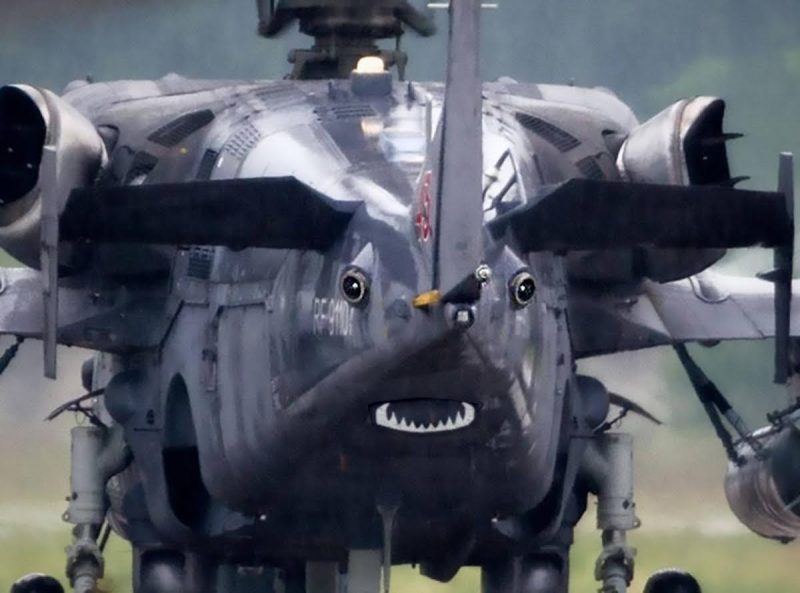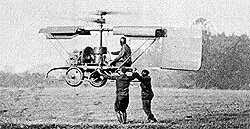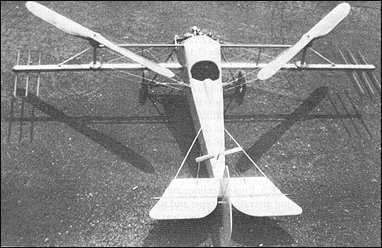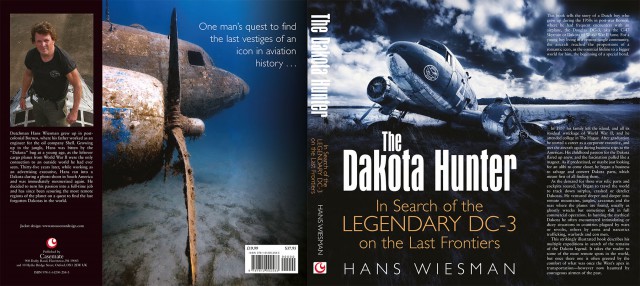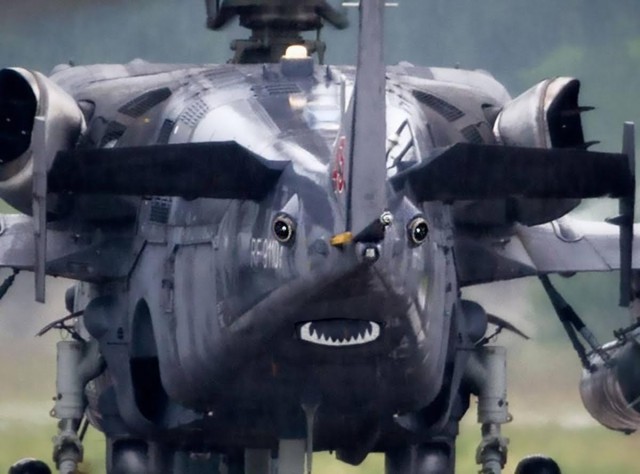
Around 1480, before he painted the Universal Masterwork Mona Lisa, the Italian Genius Architect, Artist and Inventor Leonardo da Vinci designed flying machines. Many based on mimicking the flight of a bird with the use of artificial wings to be flapped (ornithopter) but one, very remarkably, copied from the fluttering winged seeds that fly away from trees as tiny propellers.
The seed’s rotating motion works on the wind and gravity and had since ages inspired the Chinese with their bamboo toy helicopters that kids flew by spinning the propeller shaft between the palms of their hands. Leonardo’s design was somewhat similar but much bigger, it had a hand-cranked spiral rotor (see picture below) in the shape of a parasol, an “Aerial Screw” that goes vertically upwards.
It is the basic idea of the Helicopter, designed 350-400 years before the industrial revolution started! If ever built, it could not have generated enough lift to fly the machine with the (from 4 pilots) combined muscle power and would have been hard to control. Yet, the brain child of this man was to be the start of something that ages later would lead to the first controlled flight “as a bird” with that propeller.
Leonardo’s ideas finally came to reality, an ages old dream of mankind: to fly like a bird at will and control the craft in all dimensions. A tribute to the man Leonardo da Vinci, one of the greatest human spirits of all time. I saw once an exposition of his works (see photo below), it is totally beyond comprehension that such designs could be drawn 500 years ago, by the end of the Middle Ages!
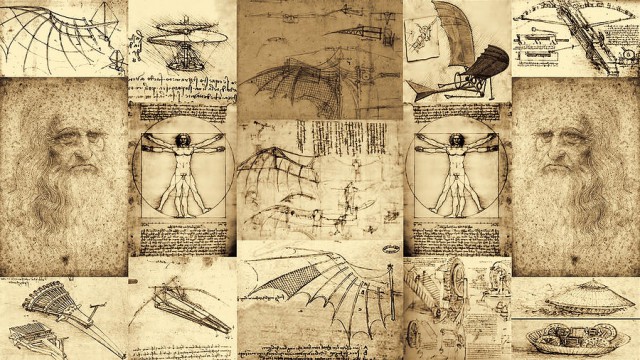
As first, there came the lighter-than-air Hot Air Balloons made by the French Montgolfier Brothers with a first human flight made in June 1783 over 1, 2 miles. Later, gas filled Balloons were driven by propellers for some directional control in flight, and German Otto Lilienthal wrote history in 1891 with human’s first glider flight over a distance of 25 meters from a hill. From there, it became a matter of finding the light weight engine to propel an aircraft into the sky on an autonomous flight. The historical first manned and controlled flight in a heavier-than -air craft was made in 1903 by the Wright Brothers , with use of two air screws driven by a single piston engine.
Much less publicized is the first flight of the helicopter. Only 4 years later, a Frenchman named Paul Cornu claimed to have made a first helicopter flight in 1907, but there is no evidence of that flight. But a man named Emile Berliner (originating from Germany, living in USA) made his first vertical Helicopter flight in 1909, which is documented (see small photo below). He was the inventor of the Gramophone that gave birth to the 20th century Recording Industry based on the flat record disc with his Victor Company (Later RCA, His Master’s Voice).
With that company, he had earned sufficient money to experiment with this radically different design of flight with “rotating wings”. In the early 1920’s, he coupled a French WWI Nieuport 23 aircraft fuselage to two beams in place of the wings. Two counter rotating wooden propellers were mounted on top and driven by the engine, placed in front of the pilot’s seat (see photo). The main rotors had differential braking and later even ailerons for controlling the pitch, a little known wonder of ingenuity.
Berliner’s son Henry showed this miracle machine to the US Army in 1924 and made a number of free flights, maneuvering in all directions. Way ahead of his time, the conservative Army officers did not really run wild on the idea and it all came to no avail. The USA would have to wait until the late 1930’s when new Army interest in the helicopter flared up again as WWII came closer to the US shores and Germany had made some spectacular helicopter shows in 1937/38.
From the outset, Germany showed more interest in the concept of vertical flight and made very detailed studies of Berliner’s aircraft, recognizing its potential. In the later 1920’s , the idea also lived on in USA, be it with only limited sources from private investors.
A man who took the name “Rotating Wing” very literal, was Maitland B. Bleecker, an engineer from NACA. His remarkable design was constructed by the Curtiss Wright aircraft factory, starting the project in 1926.
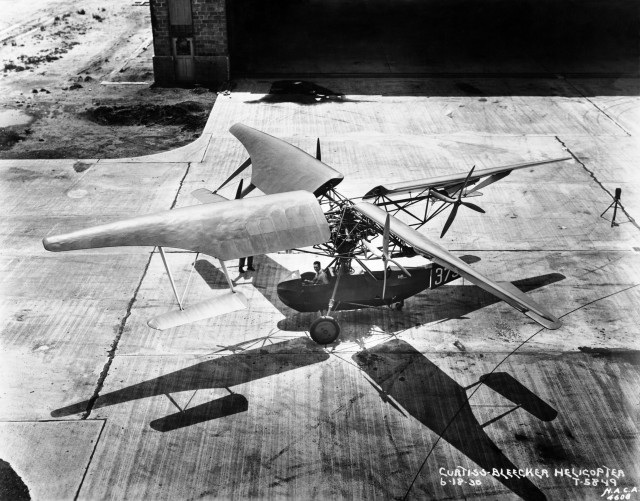
The Gyrocopter (or Autogyro) made its introduction as a simpler and more reliable design, using parts and air frames from the well established aviation technology of that time. An Autogyro is a type of rotorcraft with an overhead unpowered rotor. A smaller engine-powered vertical propeller, similar to that of a fixed wing aircraft, must provide forward speed/ thrust in order to make the horizontal rotor spinning. That airflow through the rotor disc will at sufficient speed generate a lifting force with the auto rotation of the blades.
While strongly resembling a Helicopter, it is basically a much simpler design as the rotor blades do not have a coupling to an engine to make them spinning around . No gear boxes, no chains/ belts, no vibrations as the motor could stay up in front for the forward thrust, generated by the normal propeller. It expresses the simplicity of the design, but also its snag: If there is no speed and no auto rotation, no lift either and no hovering or vertical on-the-spot landing or take-off for this machine. The Gyrocopter could fly safely at very low speeds , but needed some strip of soil to land or start and the Hummingbird like hovering was no option.
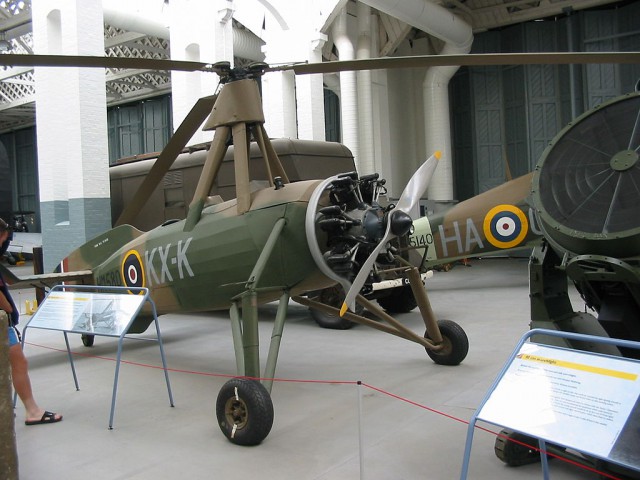
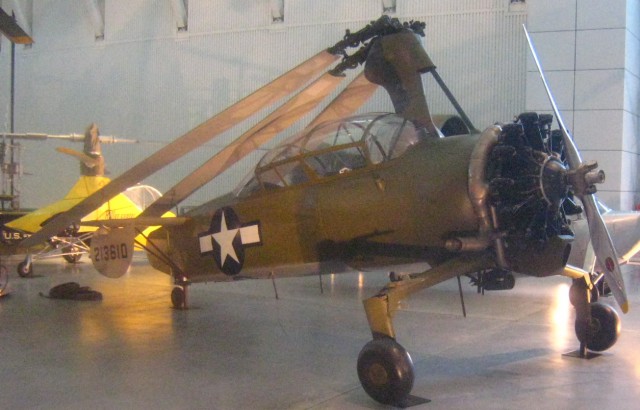
The concept of the Gyrocopter only allowed to build relatively light aircraft , to be used in the role of reconnaissance platform or liaisons, but not for heavy cargo lifting. For that purpose, they had to turn back to the more intricate real Helicopter concept. It was Heinrich Focke who went on with a further development of the original Emile Berliner designs of the early 1920’s.
Focke was ousted in 1936 from the legendary Focke Wulf company, due to shareholder pressure. Allegedly, Focke’s removal was to allow Focke-Wulf’s manufacturing capacity to be used to produce the competition Messerschmidt aircraft Bf-109, in high demand from Luftwaffe during the build up to WWII. But the Air Ministry was impressed by the Focke designed FA-61 helicopter ( see below) and allowed him to establish a new company dedicated to continue the helicopter development. The Focke-Achgelis company resulted with their start in 1937/38 in partnership with engineer Gerd Achgelis.
They started with the same idea as Cierva by using as basic platform an “off-the-shelf” double-decker fuselage with frontal radial engine. With wings removed, two huge pylons were erected in place with counter rotating rotors on top, driven by chains from the front engine via sprockets. The Focke Achgelis FA-61 was born and had astonishing flight capacities that made on-the-spot landings and take-offs possible on its novel tricycle landing gear.
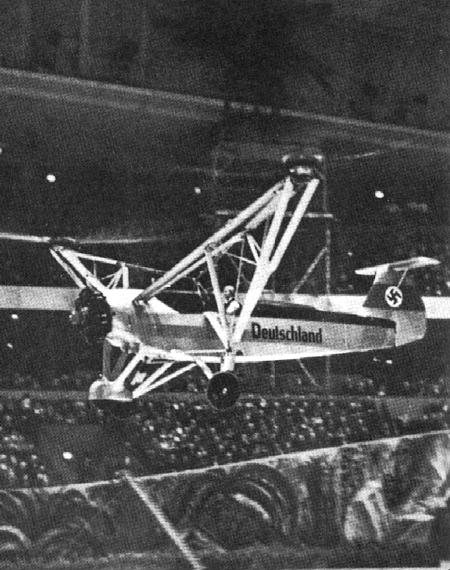
Germany saw the show case FA-61 as a test bed for more practical applications in the future battle fields and Focke developed a new fuselage design that would become the Focke-Achgelis Fa 223 Drache (Dragon). The single 750-kilowatt (1,010 hp) BMW 320 radial engine powered two three-bladed (12 m or 39 ft diameter) rotors mounted on twin booms on either side of the long cylindrical fuselage (12, 2 m or 40 ft) that had a strong resemblance with the pre-war designed German Bombers.
The Fa 223 is World’s first helicopter to attain production status, but was hampered by Allied bombing of the factory and production priority to the mainstream fighters (which also slowed down the Me-262 Jet production).
As s result only 20 were built of the Fa 223, that could cruise at 175 km/h (109 mph) with a top speed of 182 km/h (113 mph), and climb to an altitude of 7,100 m (23,300 ft). The Drache could transport cargo loads of over 1,000 kg (2,200 lb) at cruising speeds of 121 km/h (75 mph) and flew in February 1945 a secret mission from Tempelhof/Berlin to East Prussia’s Danzig (Gdansk) for reasons never fully disclosed. They could not accomplish their mission due to the fact that the advancing Russian Army that had taken control on the ground.
Many German soldiers and civilians got trapped in that port as the last ferry boat to Kiel had been torpedoed by a Russian submarine (see also my post Worst shipwreck in History). Two Draches survived the war, one went to USA on board a carrier, the other one was flown to UK, making the first ever Helicopter flight over the Channel. Both countries were very keen to get their hands on those machines and snatched them just before the Russians could.
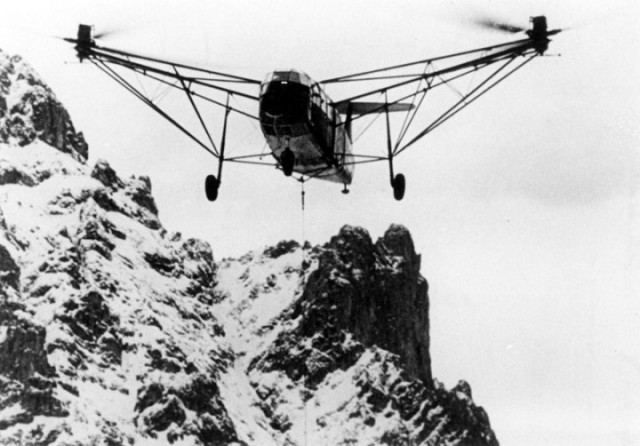
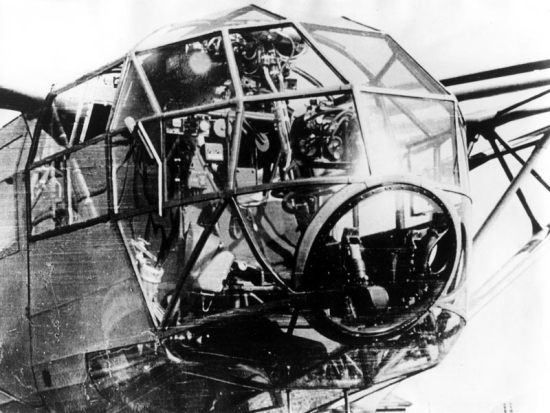
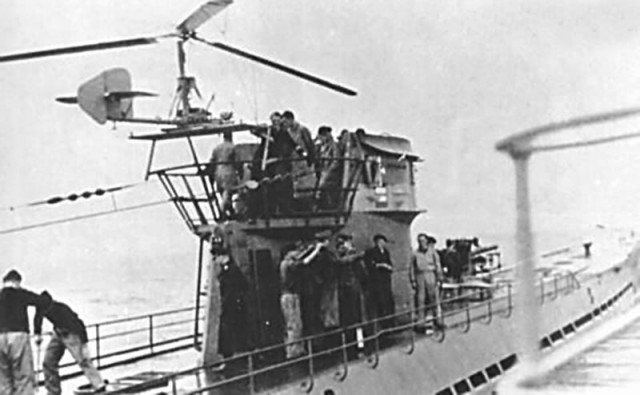
The use of this cumbersome spotter kite was later in the war limited to the Southern Atlantic and Indian Ocean, with less aerial patrols of the Allied Air Forces. One can imagine that a scramble dive to be made due to an airplane suddenly appearing on the horizon, would be in all cases a very hectic affair to reel in the kite or simply drop her off. The flying observer who spotted and announced the imminent danger by the telephone line could seal his own fate, in worst case!
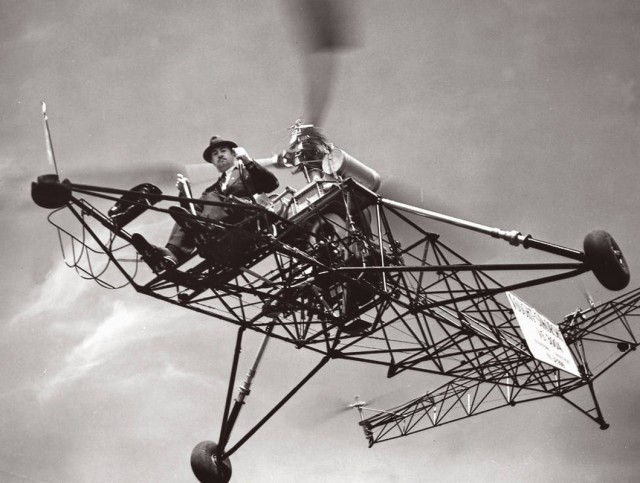
Igor Sikorsky was born in Ukraine in 1889 and had built scale model helicopters as an 11 years old boy, based on the Da Vinci drawings. He came to France and later USA to built winged aircraft. He started in 1923 the Sikorsky Aero Engineering Company of which the S-42 Flying Boat “Clippers” became legendary under the Panam flag with non-stop long distance flights from SF to Hawaii, over the Atlantic and via Puerto Rico, Belem to Rio with passengers.
In 1938, United Aircraft bought Sikorsky’s company and let him create an experimental helicopter design. Sikorsky used a single three-bladed main rotor and a two-bladed vertical tail rotor to offset torque, which became the Industry standard. On Sept. 14, 1939, Sikorsky himself took the prototype on its first flight. The helicopter VS-300 hovered several times, but was tethered to the ground. Overcoming the helicopter’s vibrations, the aircraft made its first free flight in May 1940 (photo). A year later, it went on to break the world helicopter endurance record (previously held by Germany’s Fa-61) by staying airborne for 92 minutes.
Finally, the USA understood the future capabilities of the Helicopter: there was a long road to go in development but that would lead to a great number of test platforms for vertical take off and landings ( VTOL) and by the late 1940’s the helicopter was ready to enter the next war, The Korean Conflict.( 1950-1953). Here the helicopter would star in the role as a transport, observation and communication/ gun aiming/ mine sweeping craft and last but not least, in the role as Medical Evacuations platform. It would save the lives of thousands of soldiers that could be evacuated from the front line to hospitals in matter of hours.
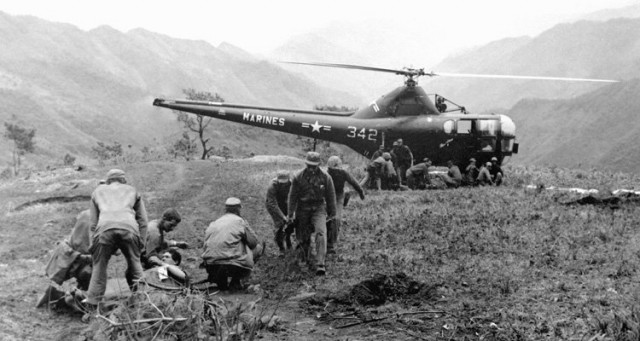
Volume 2 of “Helicopters at War!” will bring you soon more intriguing photos, starting with Helicopters of the Vietnam War era. If interested, stay tuned , there is a lot more to come on War History Online, or via my Facebook page Hans Wiesman.
In May 2015, Casemate USA/ UK published my book The Dakota Hunter . It contains similar fascinating tales in 320 pages and 250 never seen photos of my expeditions over the Globe since 1990. “In search of the Legendary DC-3 on the last frontiers” is the sub-title but many other vintage aircraft are described that I encountered on my voyages to Paradise, to Hell and back. I came to Colombia in 2006 in the middle of the War on Drugs and saw dozens of USAF C-17 Globemasters flying in on Bogota Int. Airport.
They airlifted Attack Helicopters, Agent Orange drums and Crop Dusters for fighting the FARC rebels and their coca crop. I spoke with the Helicopter pilots out there in the remote AF Base San Jose del Guaviare on the way to the Green Hell, the Amazon, FARC domain. For more details of how they fight that war on drugs with their helicopters and heavily armed DC-3 Turbo Props ( Fantasma’s or Spooky’s), you should read my book and believe me, you will be stunned.
Above you see the jacket design of my book. For a sneak preview in my book and ordering, please visit my website The Dakota Hunter. You can order my book also directly and read the positive 5- star reviews here at Amazon Order & review The Dakota Hunter. The book is for sale at all online book sellers in USA, Canada, UK, NZ, SA, Aus, Ireland, NL (Bol.com) etc. and makes a perfect Luxury Christmas Gift for your relatives, friends and relations in its shiny hardcover and fascinating photos printed on glossy paper.
Enjoy! Hans Wiesman,
